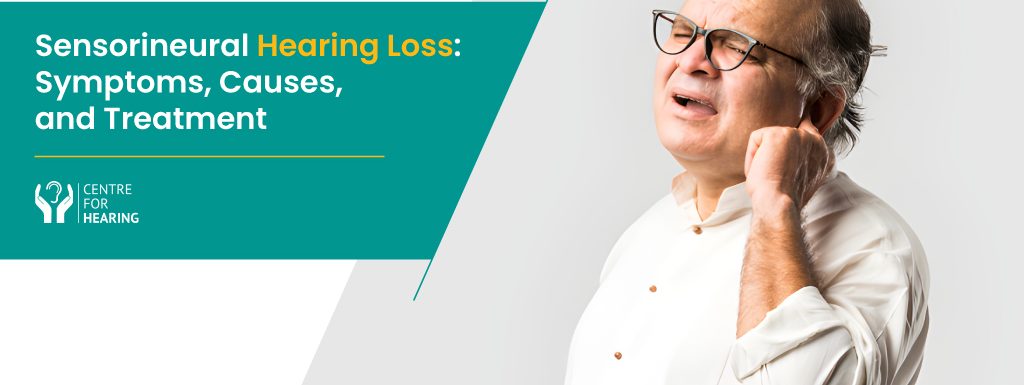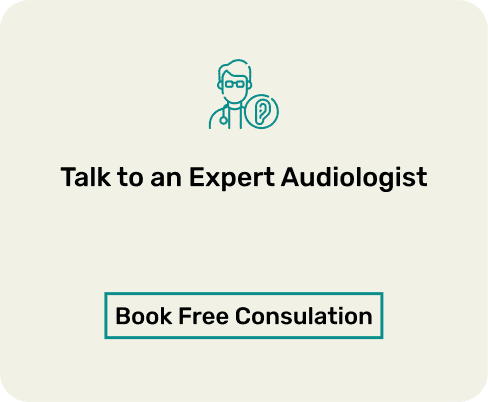We often tend to appreciate our body the way it is gifted to us. One of the most interesting parts of our body is our ears which help us in two ways — firstly, in making sense of the world through listening and secondly, by helping us balance our bodies.
However, if we lose the ability to hear or balance, life can turn upside down. Hearing loss can be debilitating in many ways, from communicating with our surroundings to being able to move around independently.
Sensorineural hearing loss (SNHL) is one such condition in which a person may partially or completely lose his or her ability to hear either through one or both ears.
In this article, we have covered everything you need to know about sensorineural hearing loss, from its symptoms, causes to treatment options.
What is Sensorineural Hearing Loss?
Our ear comprises three parts – the outer, the middle, and the inner ear.
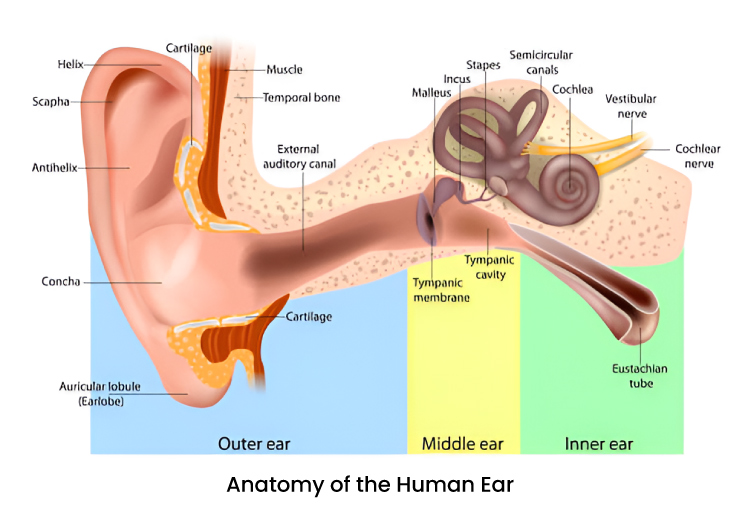
Sensorineural hearing loss happens due to damage to the inner ear or your auditory nerve.
Our ear has a spiralling organ called the cochlea that contains tiny hair cells. These hair cells are responsible for converting vibrations from sound waves into neural signals that our auditory nerve carries to our brain.
SNHL has numerous causes such as ageing (presbyacusis), prolonged exposure to loud sounds (sounds louder than 85 decibels), exposure to ototoxic drugs
SNHL can vary anywhere from mild to severe hearing impairment, depending on the intensity of the damage.
Sensorineural Hearing Loss: Symptoms You Mustn’t Ignore
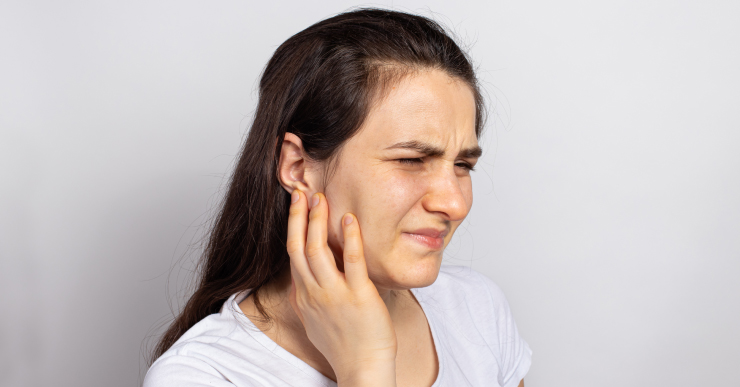
SNHL can affect a single or both ears at a time, depending on the cause. Symptoms can be ambiguous, but a hearing test would be helpful for the diagnosis.
Some of the common symptoms of SNHL can be:
- Watching TV with the volume turned up
- You believe others around you are mumbling more often
- Trouble hearing sounds amidst background noise.
- Dizziness, vertigo, or balance issues.
- Hardship in hearing high-pitched voices.
- The problem in deciphering voices even if you can hear them.
- Tinnitus in the ear.
- Difficulty in comprehending low voices, including voices of children and females.
What Causes Sensorineural Hearing Loss?
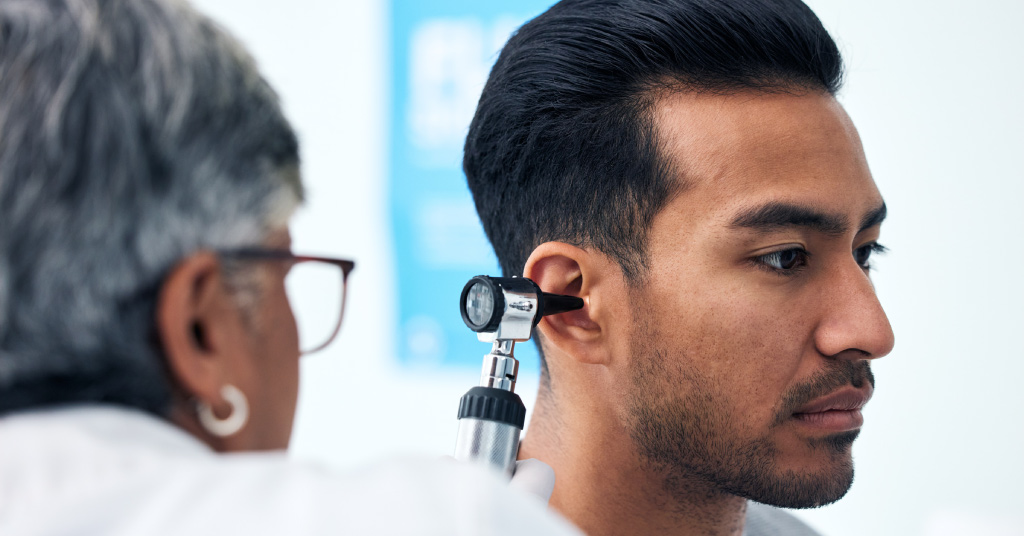
Some of the most common causes of SNHL are:
Congenital
It affects 1 to 3 per 1000 newborns. Out of this, 50% have environmental factors as a cause, and 50% have genetic abnormalities causing hearing impairment.
Presbycusis
This is age-related hearing loss. This happens due to the changes in the inner ear that occurs with age.
Loud noise
Even one-time exposure to loud noises over 85 decibels can also cause SNHL.
Meniere’s disease
It is a disorder of the inner ear accompanied by tinnitus, episodic vertigo, fullness in the ear and hearing impairment. It causes fluctuating SNHL.
Head injury or trauma
Rare blunt head trauma can also lead to SNHL due to cellular injury or perilymphatic fistula.
Ototoxicity
SNHL may also trigger due to ototoxic drugs like some antibiotics, chemotherapeutic drugs, etc.
Vestibular Schwannoma
It is a benign tumour that may pressurise the nerve, causing hearing loss and imbalance.
Types of SNHL
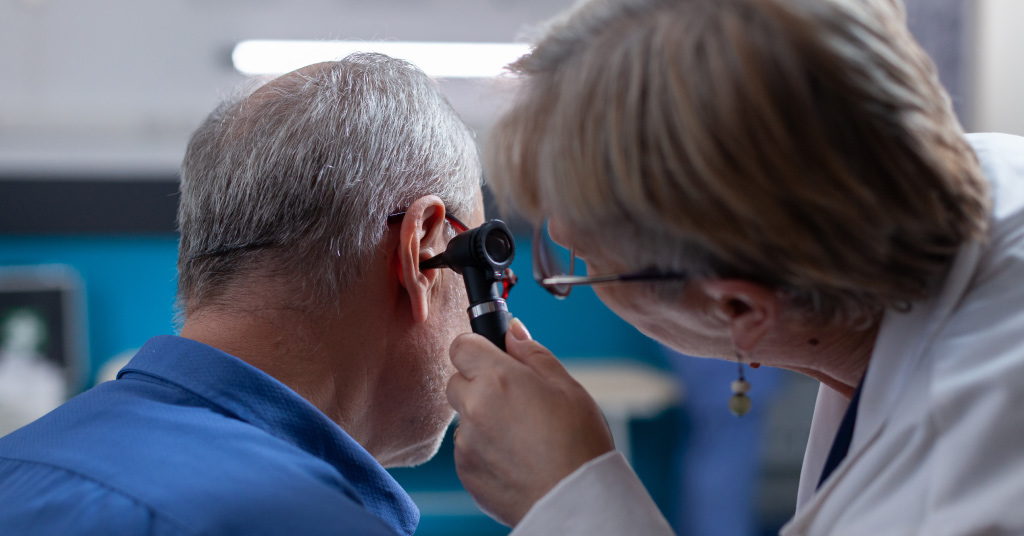
The type of sensorineural hearing loss a person experiences may depend on its cause. It may occur in one or both ears. Depending on that, there are 3 different types of SNHL:
1. Unilateral hearing loss
When there is partial or complete hearing disability in one ear, it is known as unilateral hearing loss. It can be due to hereditary reasons or may also happen due to head trauma, tumour, Meniere’s disease, or bacterial or viral infections.
2. Bilateral hearing loss
This happens when there is hearing impairment in both ears. It can happen due to hereditary reasons, medication, or exposure to loud noise.
3. Asymmetrical hearing loss
In this case, both ears are affected, but there is more severity in one of them. This, again, can happen due to genetic causes, medications, loud noise, ageing, or head injury.
Sensorineural Hearing Loss: Diagnosis
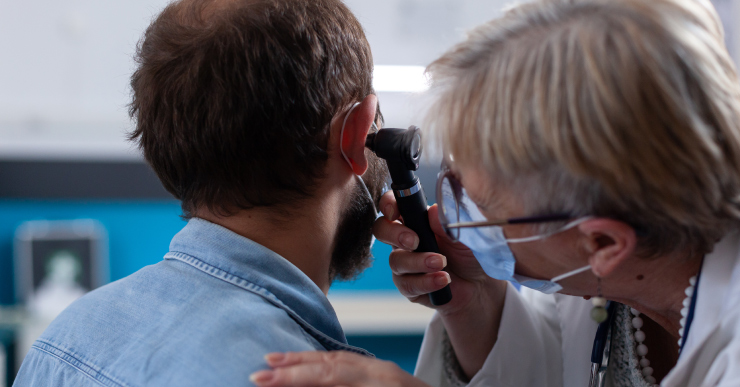
Sometimes, symptoms won’t be enough to diagnose the condition. Doctors might need to do a couple of tests. These may vary from a physical test to specialised tests like Weber’s test to the Rhine test.
1. Physical test
The physician may look for several factors, from an ear injury, inflammation, fluid, or earwax build-up to the presence of foreign bodies.
2. Weber’s test
A tuning fork is used to assess the type of hearing disability. The physician or the audiologist will strike a tuning fork and place it near the midline of your forehead. If the sound is not that audible in the affected ear, it is diagnosed as sensorineural hearing loss.
3. Rinne test
The physician would strike the tuning fork and keep it against your mastoid bone behind your ear until the sound recedes. The same thing he would do with the ear canal. If you can hear the tuning fork in front of your ear canal than against your bone, then you probably have SNHL.
Treatment Methods of Sensorineural Hearing Loss
Here are some popular treatment methods listed below:
1. Hearing aids and Gene Therapy
At present, only hearing aids and cochlear implants are the only respite as no surgical procedures can treat sensorineural hearing loss. Additionally, gene therapy looks promising in this field. However, it is still under trial and has not been used to treat SNHL clinically.
2. Positive lifestyle changes
Sensorineural hearing loss is the most common type of progressive hearing loss. For many people, it can be a part of ageing. A few precautions and lifestyle changes can help you safeguard yourself from this disease or at least in its better management if you are already diagnosed with the disease.
- Eating healthy food, sleeping well, exercising regularly, managing stress, and avoiding too much caffeine and alcohol would help.
- Keep your headphone volume below 60% to protect your ears from loud noises by closing them with your hands or using earplugs.
3. Regular consultation
It is advisable to regularly consult a physician or get regular hearing tests if you see any changes in your hearing abilities.
Final Note
Prevention is better than if not as much as effective as cure. Therefore, raising awareness about sensorineural hearing loss, lifestyle changes, suitable hearing aids with modern features, and regular consultation with hearing care experts can be helpful.
At Centre For Hearing®, we provide the best hearing care and aids for more than 40 years. Our specialised hearing centres are spread across the country to help you solve all your hearing-related queries.
Visit our website to learn more about hearing aid devices that suit your needs, access valuable resources and locate our ear care facilities.
Get in touch with us today!

